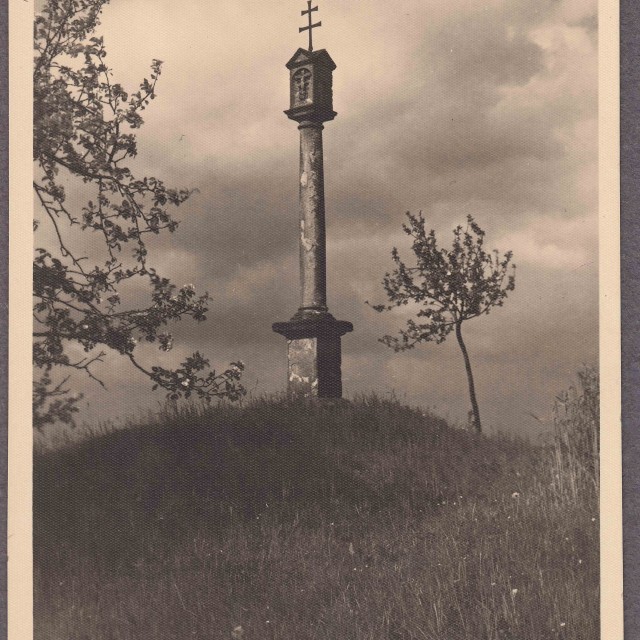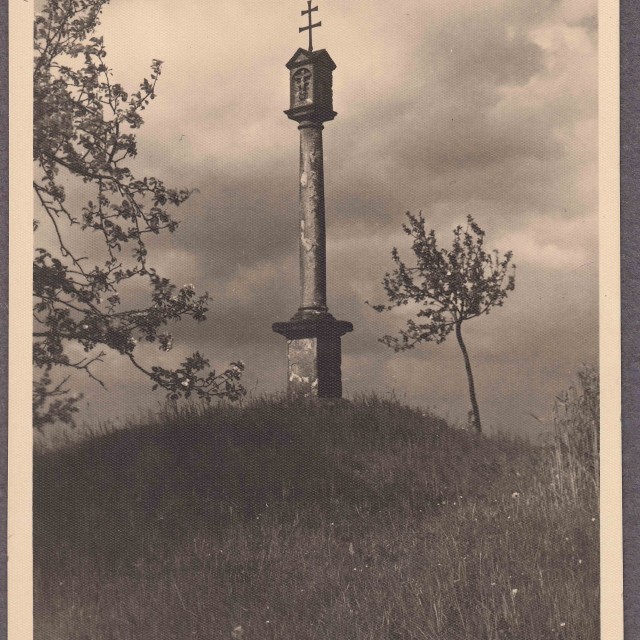Coachmen, messengers, pilgrims and beggars would stop here
A local legend has it that the tavern had a rather bad reputation. Coachmen, messengers, pilgrims, beggars and people from the surrounding area would all come here. It is unknown whether the tavern served for the accommodation of travelers but the building was spacious and sturdy, with a large adjoining farm. The wooden building stood on argillite bedding and had a large stone fireplace, a wide chimney and small windows. Due to increased traffic, the tavern was full at all times. Day and night, the guests of the tavern were making a lot of noise and thus the local residents complained to the mayor, who – however – could do nothing about it. For a few days, the noise stopped, but then it all started again. Because people would spend many a Groschen in the tavern, women of dubious reputation were attracted to the place. The guests of the tavern drank, ate and danced exuberantly. They would also indulge in played with dice. All this provoked constant fights and shouting. Oftentimes, a wandering monk tried to persuade the tavern guests to moderate their vices. However, his efforts served only for the amusement of those present. When he left, he was still praying for the tavern guests so God would forgive them their sins. He was convinced that the devil possessed the tavern. Much to the amusement of those present, he tried to drive the devil out of the tavern by sprinkling holy water in it. When one day the monk hurried past the tavern to the church on Good Friday, he heard the noise from afar at a time when Christians worship the death of Jesus Christ. Angry and unhappy, he knelt before the tavern and shouted: “God, how can you look at this Sodom and Gomorrah? I'm cursing the tavern and its guests. They shall end up in hell!” As soon as he spoke, there was a flash and thunder, the earth shook and the whole tavern sunk into the ground, which closed itself immediately above the tavern and buried it in it. The monk was speechless in his amazement and prayed for long. Suddenly, there was a silent landscape with peaceful birdsong where once the tavern had stood. In fact, however, the tavern was probably burned down in the turbulent times of the Thirty Years' War. Years later, when the place where the tavern had once stood, became a hill covered with grass and bushes, people erected a wooden monument here, the “Holy Trinity”. It is supposed to remind us to refrain from arrogance and a profligate and blasphemous life. Later, in 1703, a stone wayside shrine was erected at the site. The shrine has stood the test of time and has remained intact to this day. The dominant feature of this place is a four-meter tall, slender Tuscan column dating from 1703. It stands on a rectangular plinth supporting a four-sided chapel with chiseled recesses. The recess in the side facing to the east depicts a Calvary, the one pointing to the south St. Peter with folded hands, the one to the west the Assumption of the Virgin Mary and the one to the north St. Paul holding a sword in his right hand. The top of the column is decorated with an iron double cross. Although the authorship of the monument has not yet been determined, it may be assumed that it originates in Jelinek's steel works in Kosmonosy. The biggest threat to the monument’s existence was when the neighboring LIAZ Company in 1969 expanded its operations and intended to fence off the adjacent land where the monument was located. The plan was to quietly dispose of the shrine or transfer it to the chateau in nearby Mnichovo Hradiště. In order to speed up the operation, somebody allegedly broke the column by using a pole and a truck. It was then blamed on the noise produced by jet planes. Fortunately, in a short time, several workers of the LIAZ Company – based on the urging of the cultural heritage authority – managed to preserve the monument. The original statue was moved to the lapidarium and it was replaced by a replica made of concrete. The cultural heritage authority issued a binding decree that the monument of the Holy Trinity must not be destroyed. LIAZ then provided a new fence for the sculpture. It is interesting that during the excavation works connected to the installation of the fence, massive argillite foundations were uncovered, 50-60 cm wide, with the remains of mortar and lime plaster. Judged by the direction and the position of the foundations, it was a bulky structure. However, nobody was interested in further research of the foundations and thus they were buried again. It is probably the original foundations of the tavern V Malení. The concrete replica of the column began to erode over time and therefore the statue was dismantled and removed. In June 2013, it was replaced by a sandstone replica created by sculptor Peter Verich. It is a great pity that even though the statue is nice to the eye of the tourist, it is hard to say the same about its environment. A local witness Vratislav Šverma recalls the former appearance of the place: “I remember from my childhood that it was beautiful here. We would often ski here or go down a slope on a sleigh. When you walked from Veselá to Hradiště, you had free space everywhere around you. When you got to the decline, you could only see the edge of the path leading to Ptýrov, below there were apple trees and above the green hill with the wayside shrine jutting into the sky. Now the place is sort of built-up, somehow it’s strange...”.
Hodnocení
Hodnotilo 0 lidí
Routes
Not a part of any route.
Comments
No comments yet.



